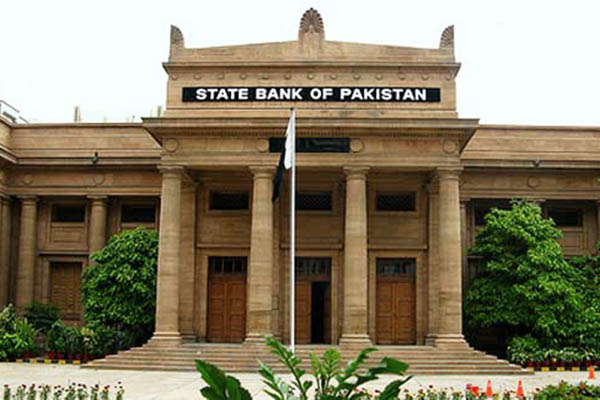
No Credit
The Monetary Policy Committee (MPC) of the State Bank of Pakistan (SBP) on Friday raised the key policy rate by 100 basis points to 16 percent, the highest since 1999, stressing this is aimed at curbing “elevated inflation” and containing risks to financial stability.
“This decision reflects the MPC’s view that inflationary pressures have proven to be stronger and more persistent than expected. It is aimed at ensuring that elevated inflation does not become entrenched and that risks to financial stability are contained, thus paving the way for higher growth on a more sustainable basis,” the central bank said in a statement issued after the meeting.
Noting that inflation was being increasingly driven by persistent global and domestic supply shocks that were raising costs, it said this was spilling over into broader prices and wages, “which could de-anchor inflation expectations and undermine medium-term growth.” It said the MPC had decided that the short-term costs of bringing inflation down were lower than the long-term costs of allowing it to become entrenched. However, it stressed, curbing food inflation through administrative measures to resolve supply-chain bottlenecks and any necessary imports remained a high priority.
According to the SBP statement, the MPC had noted headline inflation spiking sharply in October due primarily to electricity tariffs and food price hikes as a result of crop damage from this year’s floods. Additionally, it said that while a sharp decline in imports had curtailed the current account deficit in both September and October, external account challenges persisted. “Third, after incorporating the Post-Disaster Needs Assessment of the floods and latest developments, the FY23 projections for growth of around 2 percent and a current account deficit of around 3 percent of GDP shared in the last monetary policy statement are re-affirmed,” it said, while noting that higher inflationary pressures were now expected to push average inflation for the ongoing fiscal to 21-23 percent.
The MPC noted that economic activity had moderated over the past two months, with sales of cement, fuel and automobiles all showing double-digit contraction on a yearly basis. It said electricity generation had also declined for the fifth consecutive month, while large-scale manufacturing production was “flat relative to last year” in the first quarter of fiscal year 2022-23. “In agriculture, latest estimates suggest sizeable output losses to rice and cotton crops from the floods which, together with tepid growth in manufacturing and construction, will weigh on growth this year,” it added.
In the external sector, the MPC noted that the current account deficit during the first four months of FY23 fell to $2.8 billion, almost half its level during the same period last year. “This improvement was mainly driven by a broad-based 11.6 percent fall in imports to $20.6 billion, with exports increasing by 2.6 percent to $9.8 billion,” it said, adding remittances had fallen by 8.6 percent to $9.9 billion, reflecting a widening gap between the interbank and open market exchange rate, normalization of travel and U.S. dollar strengthening.
The SBP statement blamed domestic uncertainty and tightening global financial conditions for reduced inflows. “The financial account recorded a net inflow of $1.9 billion during the first four months of FY23, compared to $5.7 billion during the same period last year,” it said, advising the government to continue moderating imports to offset the higher imports of cotton and lower exports of rice and textiles in the aftermath of floods. However, it maintained, foreign exchanges reserves should gradually improve as anticipated external inflows from bilateral and multilateral sources materialize.
The MPC said it would continue to carefully monitor developments affecting medium-term prospects for inflation, financial stability, and growth. Referring to rampant inflation, it said this had prompted a rethink for this fiscal year’s projections, with inflation expected to fall toward the upper range of the 5-7 percent medium-term target by the end of the next fiscal year.
It said that the slowdown in economic activity was reflected by a continued moderation in the private sector credit, which increased by Rs. 86.2 billion during the first quarter of the ongoing fiscal compared to Rs. 226.4 billion during the same period last year. It attributed this deceleration to a significant decline in working capital loans to wholesale and retail trade services as well as to the textile sector in the wake of lower domestic cotton output, and a slowdown in consumer finance.
Addressing a briefing after the MPC meeting, SBP Governor Jameel Ahmad sought to allay concerns over Pakistan’s economic future, maintaining that Islamabad would repay a $1 billion international bond on Dec. 2, three days before its due date. He claimed that funding has been lined up from multilateral and bilateral sources to ensure the repayment would not affect foreign exchange reserves, adding an “immediate inflow of $500 million” was expected next week from the Asian Infrastructure Investment Bank.
